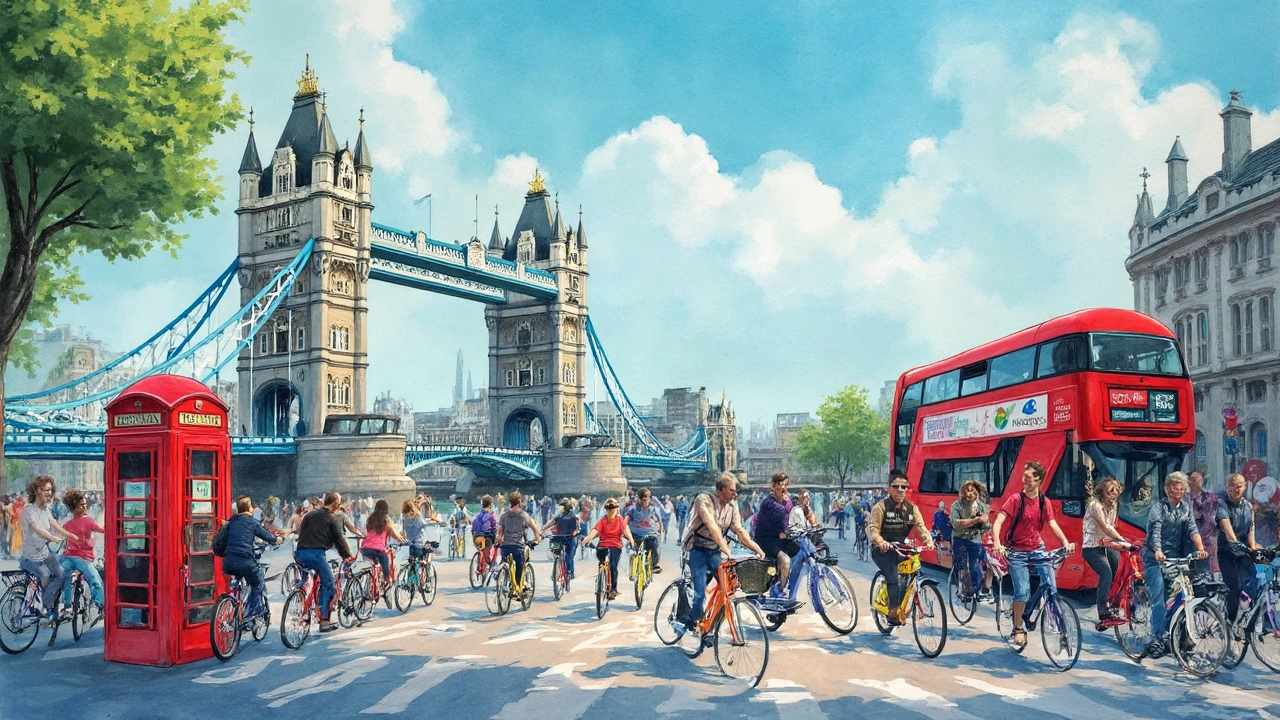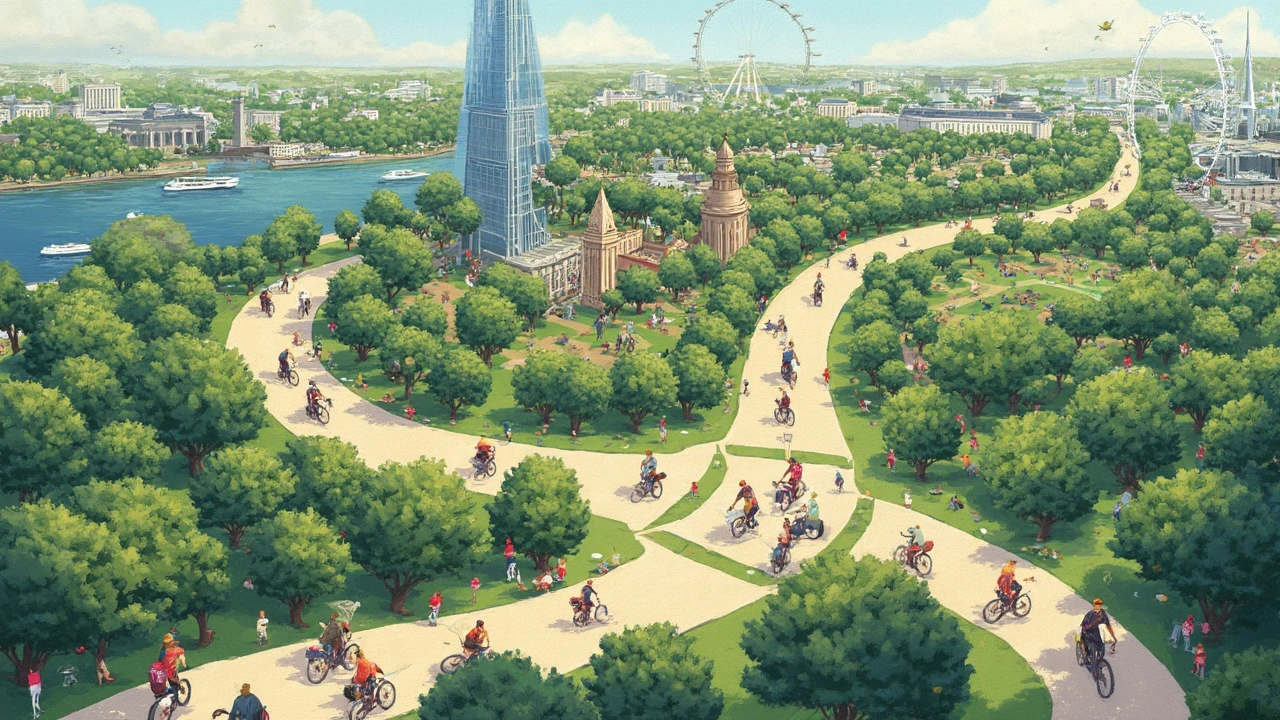
Bike-sharing systems have taken urban areas by storm, turning cities into more eco-friendly spaces. Whether you're a New Yorker hopping on one of the 645 stations scattered around the city or a Beijing resident enjoying the convenience of dockless options, these systems make getting around hassle-free. But have you ever wondered how these setups operate behind the scenes?
Bike-sharing isn't just for the avid cyclist looking for a workout. It's a smart move for anyone who wants a quick, solo commute without the need for four wheels. In bigger cities like Paris or Mexico City, these networks integrate seamlessly with public transportation, so you can easily switch from bus to bike without a hitch.
The debate over docked versus dockless bikes is ongoing. Docked bikes require fixed stations, which can be a comforting sight—knowing exactly where to pick up and drop off your ride. Dockless systems, on the other hand, offer flexibility. Park your bike near your destination and walk away! They've gained steam in China and elsewhere, where the convenience is worth its weight in gold.
Once a novel idea, bicycle-sharing systems have now become commonplace in urban environments. These public bike rental services have morphed cities, offering commuters and tourists alike a way to travel that's both practical and green. The concept is simple: grab a bike, ride it where you need to go, and drop it off when you're done. This shared economy model has proven incredibly successful in reducing traffic congestion and lowering pollution.
The journey began way back in 1965 with Amsterdam's White Bikes, a humble start to what would become a global phenomenon. Fast forward to today, and you'll find over 3,000 systems worldwide, easily accessible through networks of stations or via smartphones in the case of dockless bikes. Want to navigate Paris faster than the subway? Vélib', with its easy-to-find docking stations, is your go-to.
The bicycle-sharing revolution isn't slowing down anytime soon, thanks to advances in technology. Electronic locks, GPS tracking, and membership systems streamline the user experience and heighten security. Today, many systems link directly with public transport services, letting you use a single card or app to glide through your city travels.
Let's not forget the massive impact in places like China, which boasts some of the largest fleets. Wuhan and Hangzhou combined have ages more bikes than many other countries. Meanwhile, European trendsetters such as Spain and Italy continue to thrive with their dock-based systems, ensuring everyone can enjoy a quick ride.
So, whether you're swooping through Chicago's bustling streets or taking in the sights of Lyon, bike-sharing makes the journey as cool as the destination. Embracing these systems means embracing a cleaner, less jam-packed world. Anyone else excited to pedal toward the future?
You've probably seen those rows of bikes lined up in docks or encountered dockless bikes parked at random spots. But what's the real deal between these two systems? Let's break it down.
First up, docked bikes. These are bicycles that you're likely to find neatly arranged at designated stations. Cities like New York and Paris have embraced this model big time. You walk up to a station, check out a bike, enjoy your ride, and then return it to any other station in the network. It's super straightforward and organized. These stations act as reliable points where bikes are always available, making planning your trips easy.
Now, let's talk about dockless bikes. These bad boys are all about freedom. You can pick up and drop off anywhere, thanks to a GPS and a smart lock that's usually controlled by an app. Cities in China have really embraced this model with players like Mobike and Ofo leading the charge. The flexibility is unbeatable – no more hunting for a docking station to park!
Here's a little nugget of truth: while dockless bikes offer flexibility, they can turn into a bit of a mess if not managed well. That's why it's a balancing act for cities wanting to provide bike-sharing services without cluttering up the streets.
So, which one is better? It really depends on your city's vibe and needs. If you've got a bustling metro area with lots of concentrated traffic spots, docked might be the way to go. If you need more freedom to roam wherever, dockless could be your best friend. No matter what, these bicycle-sharing systems are pushing us towards greener, more connected communities.
When it comes to bicycle-sharing on a global scale, some cities and countries are absolutely nailing it. Take China, for instance. The country holds the crown for the largest fleets, with cities like Wuhan boasting 90,000 bikes and Hangzhou following with 60,000 bikes as early as 2011. Their dockless systems, like Ofo and Mobike, initially exploded in popularity before consolidating into a more manageable and efficient operation.
Across the pond, European cities aren't slacking either. Paris's Vélib' is a household name in public bike rentals, and it doesn't stop there. Cities like Lyon with Vélo'v and Brussels with Villo! have their own robust bike rental systems. They integrate beautifully with existing public transport, often allowing users to use the same payment methods—pretty convenient, right?
In the US, New York City leads the pack with a whopping 645 stations, while Chicago and Washington aren't far behind with 581 and 437 stations, respectively. What's interesting is that Topeka, Kansas, has built a peculiar system, heavily reliant on hubs with 138 stations, yet only around 100 bikes. It's a quirky example of how flexible these systems can be.
Let's not forget about Latin America, where Mexico City's Ecobici and Guadalajara's MIBICI are setting examples of successful bike-sharing models. Using PBSC technology, these systems demonstrate that collaboration with tech partners can lead to smooth-sailing operations.

Bike-sharing systems owe much of their success to clever collaborations and cutting-edge tech. That little card or app you use to unlock a bike often connects directly with public transport integration. In Lyon, for instance, you can use your transit card to pay for both a bus ride and a bike rental. Talk about convenience!
Partnerships are key in expanding these systems. Take Mexico City's Ecobici; they’ve teamed up with local transit authorities to streamline customer experiences. Bike rentals aren’t just about picking any bike off the street; they integrate seamlessly into your daily commute.
"Our goal is to make every part of your journey smooth, from the moment you step on a bike till you reach your office or home," says Laura Fox, General Manager of Citi Bike.
Tech advances like GPS tracking and mobile apps have made both dockless bikes and docked systems more user-friendly. You want to find the nearest bike or check its availability? There's an app for that! These apps not only simplify renting but can also keep tabs on how eco-friendly your ride was.
Some companies are even tapping into AI to predict bike usage patterns. Ever noticed how there’s almost always a bike available when you most need it? That’s no accident. AI helps manage bike distribution effectively by analyzing previous data.
| City | Bikes Available | Technology Used |
|---|---|---|
| New York | 12,000 | GPS, Unified Payments |
| Lyon | 4,000 | Transit Card Integration |
| Beijing | Over 1 million | AI for Distribution |
The combo of innovative tech and solid partnerships has put these bicycle-sharing systems on a fast track, making them indispensable for city dwellers craving speed and flexibility in their commutes.
When it comes to getting around in cities these days, bicycle-sharing systems are undeniably a game-changer. They play a crucial role in making urban mobility more sustainable and efficient. Imagine ditching traffic jams and crowded buses for a breezy bike ride—sounds appealing, right? Well, that's what these systems bring to the table.
First off, they offer a quick and flexible transportation option. Need to dash across town for a meeting? Instead of waiting for the bus, hop on a bike. It’s particularly handy for those short trips that are too long to walk but too short to drive or bus. Plus, cycling's great for your health!
More importantly, these systems are eco-friendly. They significantly reduce pollution and the carbon footprint that comes from car emissions. In cities like Amsterdam and Copenhagen, cycling is already a major part of everyday life, thanks to well-established bike-sharing networks.
Let's not forget how bicycle-sharing integrates beautifully with public transport. Many cities are now offering unified payment methods, making it seamless to switch from train to bike. In places like Paris and Mexico City, you can use the same transit card for buses, trains, and bikes. Genius, isn't it?
Here's an interesting stat for you:
| City | Annual Bike Rentals |
|---|---|
| Paris | 20 million |
| New York City | 17 million |
| Mexico City | 10 million |
This kind of integration encourages more people to leave their cars at home, reducing both congestion and pollution in metropolitan areas.
Bicycle-sharing also supports urban planning. By analyzing bike usage data, cities can identify high-demand areas and improve infrastructure where it's needed most. Think more bike lanes and safer roads—it's a win-win for everyone.
The future of bicycle-sharing systems looks more promising than ever. Cities across the globe are warming up to these clever transport solutions, and we can expect some cool changes on the horizon. With advancements in technology and urban planning, bike-sharing systems are set to become even more efficient and user-friendly.
One big trend is the incorporation of electric bikes or e-bikes. These are fantastic for people who might need an extra boost, especially in hilly cities. You can pedal as normal yet switch to electric when you hit a tough patch. Cities like San Francisco and Oslo are already jumping on the e-bike trend, aiming to offer residents a sweat-free commute.
But that's not all. The integration of bike-sharing with public transport systems is getting better by the day. In some places, your public transport card will soon be your ticket to hop on a shared bike without a fuss. It's all about making commuting smoother and more convenient, cutting down the time you spend managing different tickets or apps.
Data analytics will play a huge role too. By analyzing usage patterns, cities can ensure there are always enough bikes where they're needed most. No more showing up at an empty dock or searching miles for the nearest ride. Thanks to tech, predicting demand will be as common as a morning cup of coffee.
And let's talk about sustainability—everyone's favorite buzzword. Globally, cities are on a quest to reduce their carbon footprint. Bike-sharing provides a green alternative to gas-guzzling vehicles, helping patches of urban greenery thrive. Expect to see more dockless bikes and smart docking stations popping up as a part of 'smart city' initiatives.
To sum it up, bike rentals are more than just a passing trend; they're evolving into an essential part of urban life. From tech upgrades to eco-friendly policies, everything's aligning to make these systems a staple in tomorrow's cities. So, whether you're a daily cyclist or someone contemplating giving it a try, this is an exciting time to start pedaling!
Write a comment